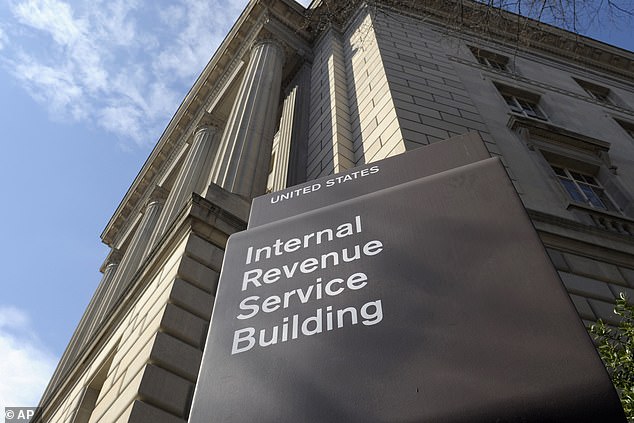- The tax was highest in Oregon, Maryland, Hawaii, California and Maine.
- Florida, Nevada, Tennessee, Texas and Wyoming were among the most lenient.
There is a big difference between earning $100,000 before and after taxes, and in some states that gap is larger than in others.
In Oregon, a worker would need an annual salary of more than $156,000 to earn $100,000 a year, or about $8,300 a month.
At the other end of the spectrum, in a handful of states, where there is no state income tax, a salary of just $137,000 would produce a take-home pay of $100,000.
Residents of Florida, Nevada, New Hampshire, South Dakota, Tennessee, Texas, Washington and Wyoming will enjoy the most lenient taxes: They will return home with 72.8 percent of their pre-tax salary.
Eight states had the lowest taxes: Florida, Nevada, New Hampshire, South Dakota, Tennessee, Texas, Washington and Wyoming. In the photo, the IRS building in Washington.
Although Alaska also technically has no state income tax, some regions may impose their own taxes with an average combined rate of less than 2 percent.
After Oregon, the states with the highest taxes include Maryland, Hawaii, California and Maine, in order.
Surprisingly, some 13 states impose higher taxes than New York, where earners would need to have an annual salary of about $149,500 to take home $100,000.
Considering all 50 states, the average required salary before taxes was approximately $146,500; Oklahoma and Colorado were in that region.
The figures were published in a recent GOBankingRates studywhich considered average federal income taxes and withholdings for Social Security and Medicare, as well as state and local taxes.


